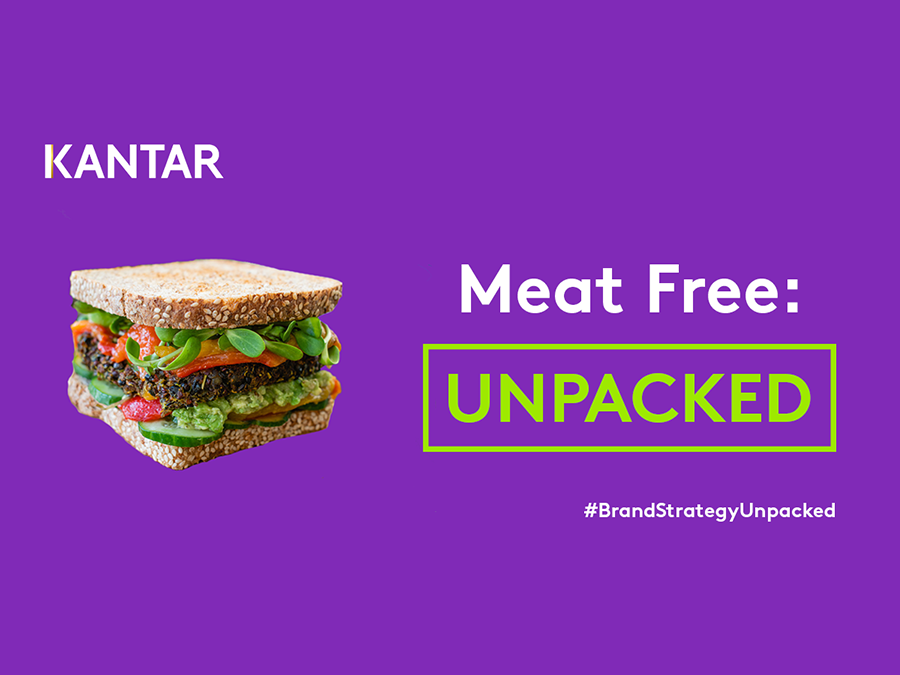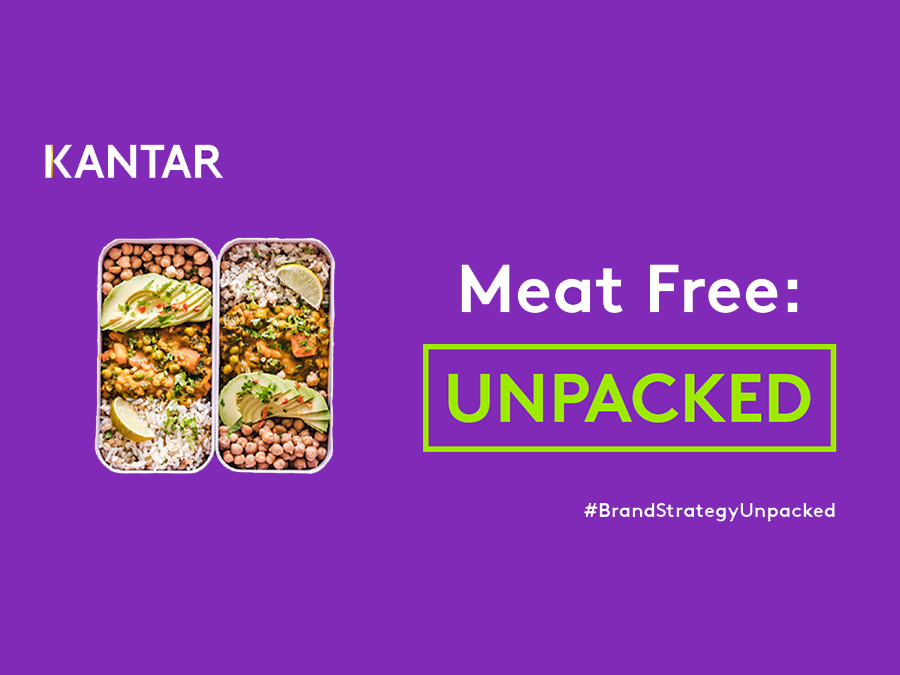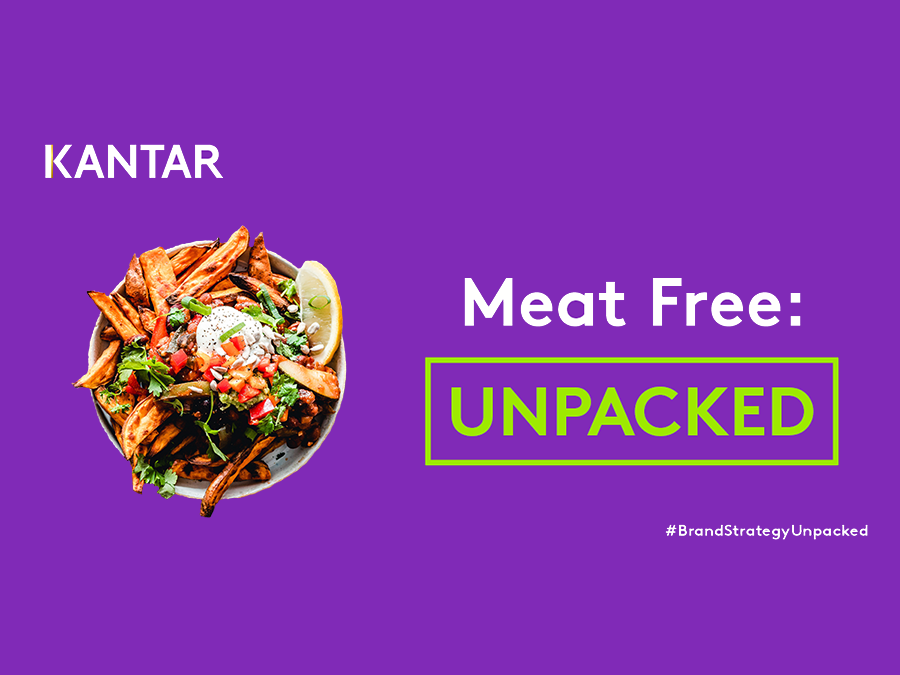As meat-free products become more abundant, the big questions on everyone’s lips are: How can my brand stand apart? How can I ensure my New Product Developments (NPDs) will drive top-line growth?
Innovation is difficult. An average of 10% of NPDs fail in year 1 alone. When innovating for success it is important that we ensure our new product and surrounding executional elements will drive trial and brand power. In this latest article in Kantar’s #BrandStategyUnpacked series we will examine the Top 10 NPD launches of 2022 in #MeatFree and the market gaps evident in our data to find routes to driving successful #Innovation.
The Top 10 Meat Free NPDs clearly address consumer needs
These ten launches alone account for almost a third (32.5%) of all meat free new launch grocery spend in 2022.There is an interesting mix across our 2022 Top 10 NPDs for meat free.

Richmond is topping the 2022 NPD launches (grocery sales) and has successfully broadened its offering. Tapping into key consumer needs for variety of range and formats, convenience with ready to eat chicken pieces and cueing health (high protein and fibre source).
Quorn, defending share from new entrants, continues to keep its offer fresh with their sweet chilli mini fillets launch (#9). The flavour and variety in the form of ‘sweet chilli’ is differentiating, whilst also addressing convenience with ‘ready to eat’ and health (high protein and fibre, low saturated fat, no soy).
We see a range of newer entrants and emerging brands featured in the Top 10, indicative of the growing category competition. THIS reached #9 in the 2020’s top 10 largest grocery launches – securing £5.9m in 2020 alone (Source: Kantar Worldpanel). Two years later, THIS is still bringing new products to the market in ‘chicken’ pieces (#2) and ‘pork’ sausages (#6). Giving consumers confidence in their sustainable practices as a certified B Corporation and offering a variety of ‘meat-like’ products.
The winning innovations have all played to a need for variety, convenience or health. Successful innovations focus on understanding people, real consumer tensions and context (experience and behaviours) to drive sustainable growth.
As the category develops and becomes increasing competitive, it is important to keep a finger on the pulse of emerging consumer needs to address for future #BrandStrategy and #Innovation in meat-free.
But new, nuanced needs are emerging
Kantar segmented consumer needs to determine what people want when they eat meat-free. This foundation understanding can help brands innovate and create strategies based real consumer needs and tensions. Our research showed that the two biggest need segments ‘Healthy’ and ‘Convenient’ are still under delivered to and offer opportunities to deliver even better to consumer needs.

Creating perceptions of ‘good for you’ is still a job to be done
Nearly half (42%) of consumers are ‘not sure if meat alternatives are actually healthier than meat products’, indicating a key job to be done.
Consumers are looking for more specific health benefits, such as digestive system support, sources of antioxidants and lower saturated fat. Whilst ‘meat-like’ offerings are meeting a key need, consumers also want support getting more vegetables into their diet and calorie-controlled portions, indicating how brands and NPDs can play a role in supporting healthy behaviours and healthier living.
Natural qualities are also becoming increasingly important i.e., ‘trust how it is made’, ‘clean label’, ‘is organic’ and the ability to ‘stay fresh’, indicating the cross over between health and sustainability and a demand for brands to take a holistic approach in their practices and product development when it comes to health, well-being, and sustainability.

Convenience is more than just quick to prepare
Convenience means many things to consumers - from easy to prepare, to the right pack for different occasions (e.g. snacking), to recyclability, and option that align with dietary needs (e.g. gluten free). We see below that there is plenty of opportunity for brands to develop NPDs that offer further convenience within the meat-free category.

The consumption of meat-free products isn’t in isolation, with 50% preparing meals to eat with partner/ spouse and 25% with children. Furthermore, 88% of meat-free consumption is in the home, indicating a clear opportunity for snacks and occasions on the go. We see this trend already coming to life with new offerings this year like THIS launching their ready to eat snacks. When thinking about innovating in meat-free it is key to consider these broader social occasions and designing with different contexts in mind.

Packaging and format is an area where consumers are feeling tensions. Nearly a quarter (25%) find it difficult to understand food labels and half (50%) would be more likely to buy if they could see the product through transparent packaging. People want to be super clear on what they are getting (health, ingredients, look and feel) at the point of purchase.
However, packaging has other challenges outside of cuing the product experience/ expectation. Consumers want formats that offer additional benefits: good to store, good to eat out of, good to reseal, stays fresh, and recyclable. Getting packaging and format right is a key area for innovators to be considering and offer a point of difference when it comes to convenience.
Ideation grounded in real consumers’ needs and tensions will help to unlock growth opportunities. But great NPD can’t thrive alone. Effective in-market execution is imperative to maximise commercial success, with launch strategies well thought through, monitored post-launch and rapidly reviewed.
Taking innovation forward in meat free means designing, testing and activating for success
Whether it is through new formats, new ingredients, new flavours, positioning ourselves in new moments and occasions, or strengthening our brand communications linked to specific needs of importance, there are plenty of opportunities in the meat-free category to ensure your brand innovates for success.
When designing for success it is important to test and learn and validate assumptions that your NPDs will drive meaning and difference amongst consumers, and back this up with a strong commercial validation of in-market trial and incrementality. Kantar we are well placed to support you on your journey to drive brand and innovation growth that is grounded in consumer needs.
Look out for further ways to drive meaning and difference in this market in our next #BrandStrategyUnpacked installments. Follow the hashtag to make sure you don’t miss them.



